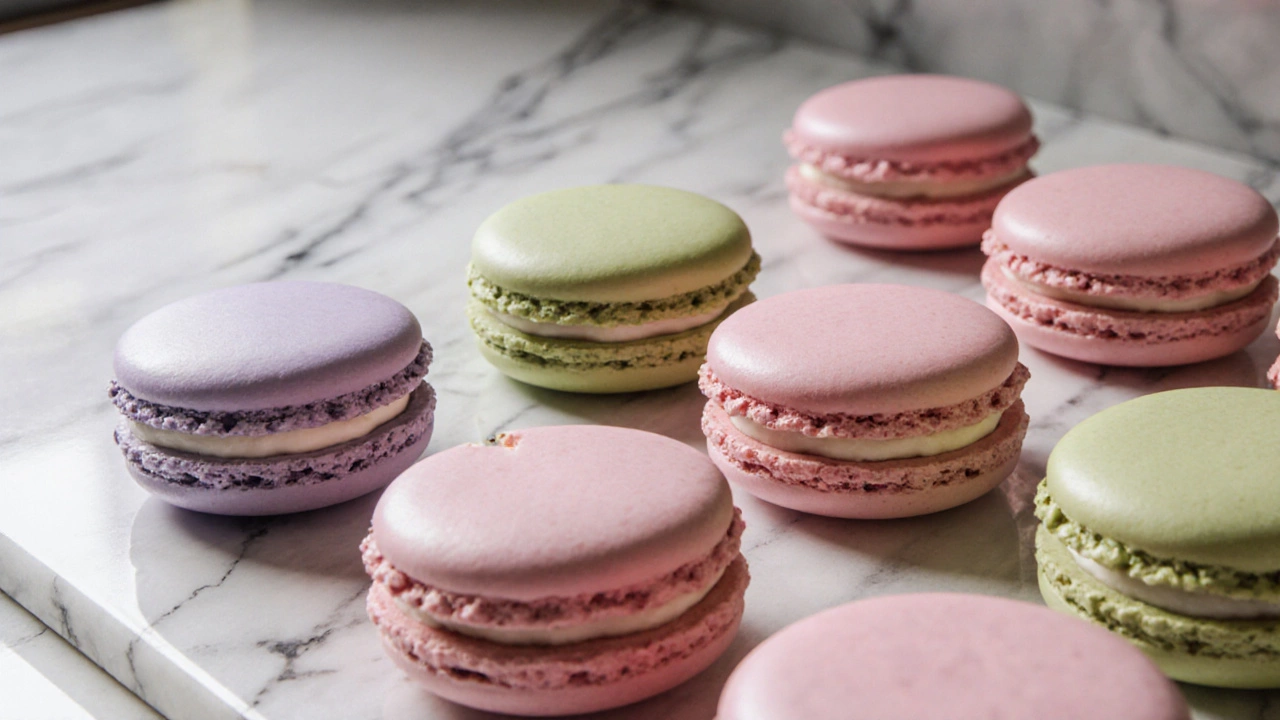
What Does Macarons Mean? Definition, History, Types & How to Enjoy Them
Discover the true meaning of macarons, their history, key ingredients, flavor trends, and a handy guide to baking or buying these French delights.
When you think of macarons, delicate French almond meringue cookies with creamy fillings, often brightly colored and stacked in pairs. Also known as macaron cookies, they’re not just candy—they’re a symbol of precision, artistry, and French baking tradition. Unlike regular cookies, macarons have a crisp outer shell, a soft chewy center, and a filling that ties the whole thing together. They’re not meant to be eaten in bulk; they’re meant to be savored, one bite at a time. And while they look fancy, their core ingredients are simple: almond flour, egg whites, and sugar. But get any of those wrong, and your macaron might crack, spread too much, or turn into a sticky mess.
The French macarons, a refined version of the Italian macaron that became iconic in Parisian patisseries didn’t start as a luxury treat. They were simple almond biscuits brought to France by Catherine de’ Medici’s chefs in the 1500s. Over centuries, bakers in Lyon, Nancy, and later Paris turned them into the delicate, colorful treats we know today. The real magic? The macaron ingredients, the exact balance of almond flour, powdered sugar, and aged egg whites that create the signature ruffle or "foot". Too much flour? Dense and dry. Not enough aging? No foot. It’s science, not luck. And that’s why people travel across France just to taste the best ones.
Today, macarons are everywhere—from high-end patisseries in Paris to grocery store shelves in small towns. But not all are created equal. The real ones take time. They need humidity control, exact oven temps, and patience. That’s why you’ll find guides on where to eat the best in France, how to build a macaron tower for parties, and why some shops charge more than others. It’s not just flavor—it’s technique. And if you’ve ever tried making them at home, you know how tricky it can be. That’s why so many of the posts here focus on the details: the science behind the rise, the right fillings, the common mistakes, and where to find the real deal.
Whether you’re a curious foodie, a home baker who’s battled a cracked macaron, or someone planning a wedding centerpiece, this collection has you covered. You’ll find practical advice, cultural context, and real-world tips—not just theory. No fluff. No hype. Just what you need to understand macarons, make them better, or pick the best ones when you see them.

Discover the true meaning of macarons, their history, key ingredients, flavor trends, and a handy guide to baking or buying these French delights.